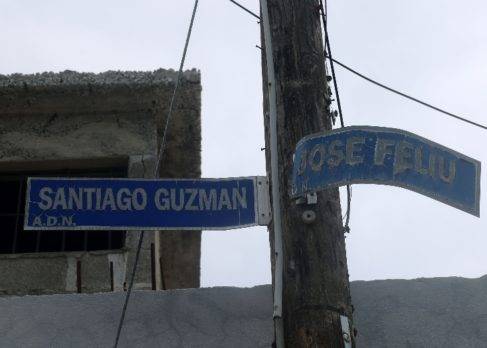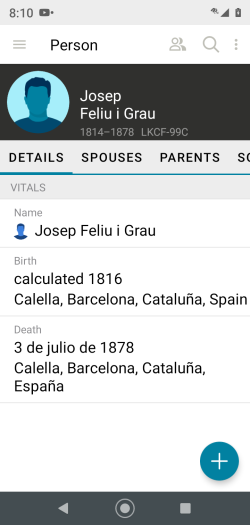- Thread starter AlterEgo
- Start date
You are using an out of date browser. It may not display this or other websites correctly.
You should upgrade or use an alternative browser.
You should upgrade or use an alternative browser.
Cibao “i”
It depends on the family Branch of the genealogy tree that you belong to... example in the same side of my father's family Rojas I found my side was rich people but in the side of my great-grandfather others sons family descendants they were poor.And how come Almonte is a poor man's name in the D.R., while it's origins are probably Arabic and we own a village Canada?
But the money vanished after my grandfather died, all my uncles including my self we were alcoholics 😂
JJ
A village in Canada 🤣And how come Almonte is a poor man's name in the D.R., while it's origins are probably Arabic and we own a village Canada?
I should've written 'a village IN Canada.'A village in Canada 🤣
My bad, sir. You're a gentleman and a scholar.
I did read it as a village "in" Canada... tbh that's what I found humorousI should've written 'a village IN Canada.'
My bad, sir. You're a gentleman and a scholar.
I found the town name "MAO" to be a curious one.Someone posted this link to a Dominican genealogy page I belong to, I thought it was interesting about the “i”. Mr AE’s father’s family were from Santiago, Montecristi and Mao, and his dna test revealed his greatest ethnicity was Portuguese; surprised us at the time (we expected Spain & Italy), but this ties right in.
So...
Down the rabbit hole I went.
Once I got through all the Mao Zedong stuff I found this Wikipedia page.
MAO (hand) itself has Galician/Portuguese roots.

Galician–Asturian - Wikipedia
And then of course MAO is the capital of the province of VALVERDE, which is also Portuguese.
just curious by what means did you use to investigate thisSince I saw this article in a Dominican online news source I started investigating about my family side of my dad which I didn't have much information.
I was able to trace my family tree up 5th generations... year 1825 Arnaud family is documented in Family Search . org in Cayetano Germocen - Moca DR.
JJ
just curious by what means did you use to investigate this
Easy online these days. The Mormons website (www.family search.org) is free and they have tons of Dominican records back into 1700s.
You should also research what is the complete name of Mao. If it was founded in colonial times, its complete name will include a saint or virgin from the Catholic church.I found the town name "MAO" to be a curious one.
So...
Down the rabbit hole I went.
Once I got through all the Mao Zedong stuff I found this Wikipedia page.
MAO (hand) itself has Galician/Portuguese roots.

Galician–Asturian - Wikipedia
en.wikipedia.org
And then of course MAO is the capital of the province of VALVERDE, which is also Portuguese.
For many years people thougth that Moca was simply that named after the river. The documents from seversl centuries ago were discovered and it turns out the full name of Moca is Nuestra Señora del Rosario de Moca. The oldest church in the town is nsmed sfter Ntra Sra del Rosario.
Bonao = Santa Rosa de Bonao
La Vega = Concepción de la Vega
Montecristi = San Fernando de Montecristi
Puerto Plata = San Felipe de Puerto Plata
Samaná = Santa Bárbara de Samaná
Baní = Nuestra Señora de la Regla de Baní
Etc...
Other places aren't name after something religious, such as Boca Chica, but they were not founded in colonial times. During that time there was nothing in Boca Chica and, in fact, if you see a map of the island of 1785 (the official one created for the King of Spain), that area has the name Punta Magdalena or something like that.
Other places got their names in colonial times, but for some reason time has modified them. Such is the case with Isla Catalina which in the map mention in the previous paragraph it says Isla Santa Catalina.
There is the well known of Isla Saona, but Columbus gave it the name of Isla Sabona (after the Italian town with the same name.)
Lastly, some places were not founded in colonial times but have a saint in their official name, such as San Pedro de Macorís.But it's rare to have that and not be founded in colonial times, unlike San Francisco de Macorís which was founded and named in colonial times.
Most of the towns founded in the 1700's were done with Spanish families from the Canary Islands. This alsl included the refounding of several towns that were destroyed in 1606 with the Devastations such as Montecristi and Puerto Plata. Other towns were founded with a mixture of Spaniards from the Cansry Islands and people collected from the surrounding countryside, such as Neiba. Other places were founded back in the 1490's and 1500's, never destroyed durimg the devastations but received Spaniards from the Canary Islands as additions to the population they already had, such as Santiago and La Vega.
Towns in the Central Mountains such as Jarabacoa, Jánico, etc were all founded after Dessalines invasion in 1805 by people from La Vega, Santiago qand surrounding countrysides that fled to the mountains in order to avoid being assassinsted by the Haitian troops. They basically went into the mountains and didn't began to cone down until after the Reconquista and a few more many years later after the Restauración. Most of the founding families of those towns no longer live in the Dominican Republic as they all left for the United States during the 1970's and 1980's. Many of them are white and I have always suspected many of the authorities which tended to encourage emigration thought they were placed there by Trujillo when in fact they go back into colonial times.
At the time of the mass emigrations the "pasaportes machetes" were in vouge and through thatleft entire families from the DR. That was a type of immigration fraud as many people would simply change the photo for one of them (or of they looked similar to the original person for whom the passport was emitted) and once arriving usually at JFK, the US immigration officials found it hard to verify the persons were who the passport said they were and let them in. Another trick was if someone with a Dominican passport died, many times a similar looking brother would pretend to be him and thst way they got into the United States.
The Portuguese connection?
Heck.
Some people even say that Christopher Columbus might well have been Portuguese.

 www.forbes.com
www.forbes.com
Heck.
Some people even say that Christopher Columbus might well have been Portuguese.

DNA Testing Of Skeleton May Prove Christopher Columbus Was Really Portuguese
DNA testing of the skeleton of a Portuguese nobleman may finally settle the question of Columbus's ancestry.
 www.forbes.com
www.forbes.com
The "rich Rojas" were owners of many factories in Moca (especially in the brewering industry, selling a big company to Cervecería (Presidente) before CND was acquired by Ambev. Today they're mostly prominent doctors and elite ones in the Cibao Region.It depends on the family Branch of the genealogy tree that you belong to... example in the same side of my father's family Rojas I found my side was rich people but in the side of my great-grandfather others sons family descendants they were poor.
But the money vanished after my grandfather died, all my uncles including my self we were alcoholics 😂
JJ
I was thinking that would be able to claim for France citizenship up to 4th generation but I will need to prove family ties.just curious by what means did you use to investigate this
Can't find my great-grandfather both certificate.
Can't provide documentation of place of birth, probably in France or probably in DR.
JJ
Yes, my grandfather death registration says profesión= Industrial.The "rich Rojas" were owners of many factories in Moca (especially in the brewering industry, selling a big company to Cervecería (Presidente) before CND was acquired by Ambev. Today they're mostly prominent doctors and elite ones in the Cibao Region.
JJ
Exactly, that's where I get all my information. They have a online database of DR since 1801.Easy online these days. The Mormons website (www.family search.org) is free and they have tons of Dominican records back into 1700s.
I have downloaded many birth and death registrations.
Registro Civil and Catholic churches records have been microfilms.
JJ
Another good thing is that I was able to build my own family three in the app, they have a program where you can create a person in the family three, you can search in the records, download the certificate and attach files, another good thing is a program called linker where the system automatically picks for possible duplicated persons which I found a couple that were already created by another far member of my Arnaud family.
I was able to open a chat conversation with a far cousins.
This is fascinating 😍 every evening I spend hours in front my PC searching and trying to collaborate adding and indexing information as most of the microfilms are not 100% readable.
JJ
I was able to open a chat conversation with a far cousins.
This is fascinating 😍 every evening I spend hours in front my PC searching and trying to collaborate adding and indexing information as most of the microfilms are not 100% readable.
JJ
My Great grand father was a Spanish military range - General came to DR during the time of La anexion a España.
Also found his son was a musician who play in the San Cristóbal municipal band.. Trujillo honored him, one of the streets of the city had his name = Jose Feliu.
This is getting interesting 🤔 now I can claim Spanish citizenship.
JJ
Also found his son was a musician who play in the San Cristóbal municipal band.. Trujillo honored him, one of the streets of the city had his name = Jose Feliu.
This is getting interesting 🤔 now I can claim Spanish citizenship.
JJ
Attachments

Arte de José Feliú brilla con el paso del tiempo
José Feliú está sumido en un olvido inexplicable. Antes de conquistar el mundo con su arte, dirigió bandas municipales en Santiago, su ciudad natal, Moca,
 hoy.com.do
hoy.com.do
Unbelievable, I was born and raised in Santiago and never met a single member of this Family. I knew about my ties to the family but never have the opportunity to be introduced to them.
Thanks to Family search .org.
JJ
It takes time because the more you search more interesting information you find, I found out I am related to families that I never in my life heard those surnames example Dip, Jamatto, Esteva, Saviñon etc...Family search is very impressive.
It has taken me back to the 1600's and now have a recognized family tree.
I was on Ancestry for years and never made it past my great-grandfather.
I am done with the side of my dad now time to move on to investigate my Mom family three...Taveras, Guzmán, Castro, Ureña, Rodríguez and Lopez... this will be easier for me as this is the family I grew up with.
JJ


